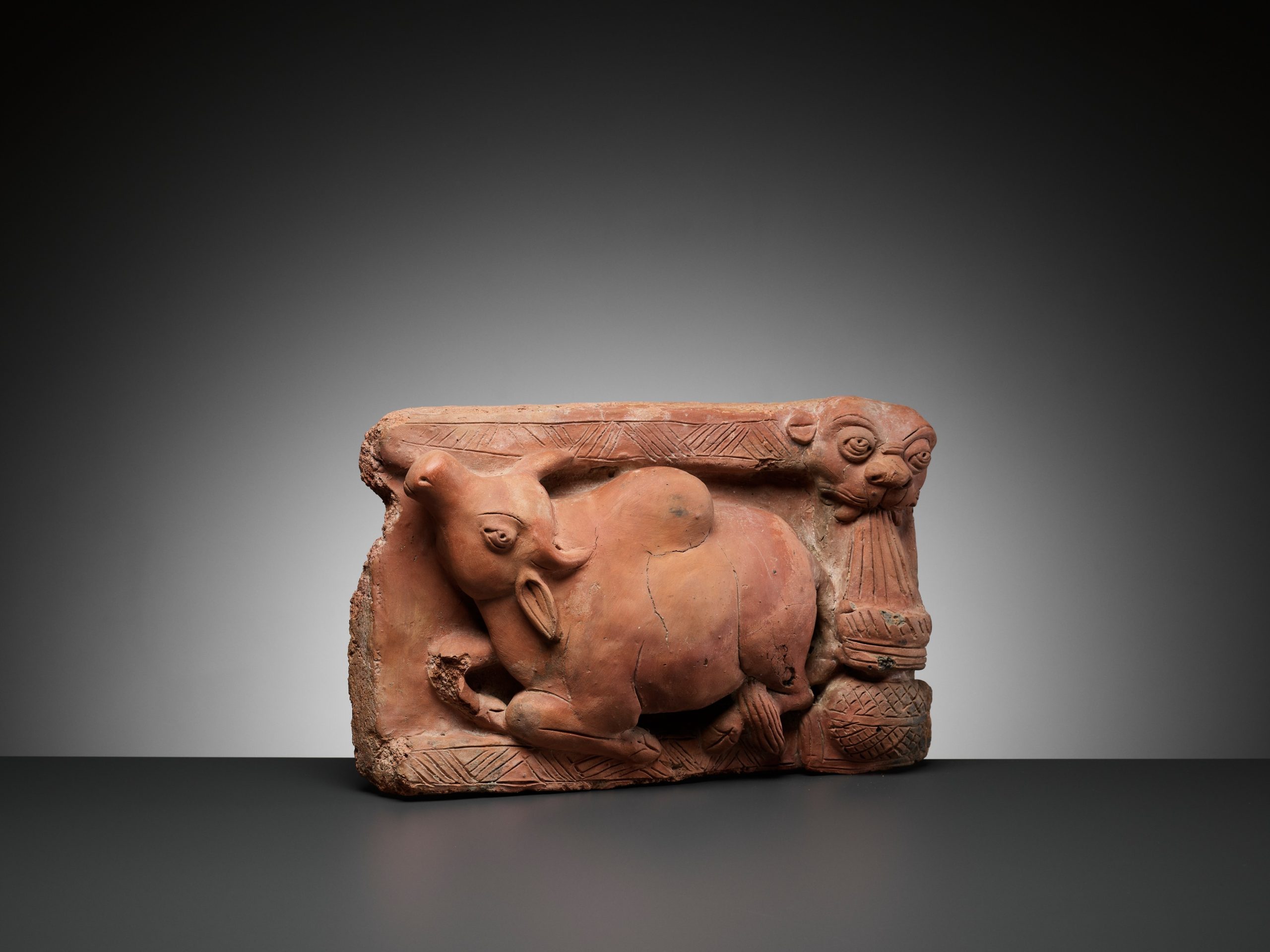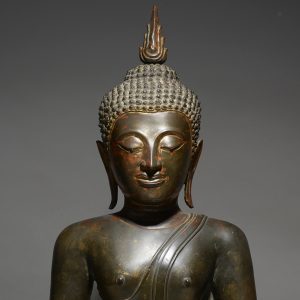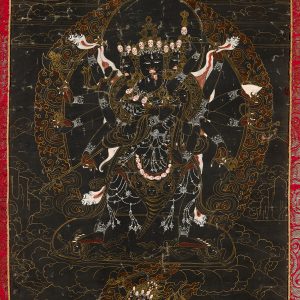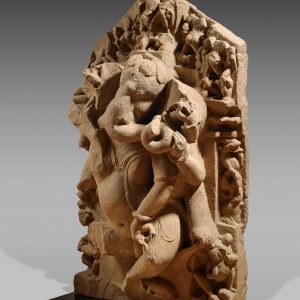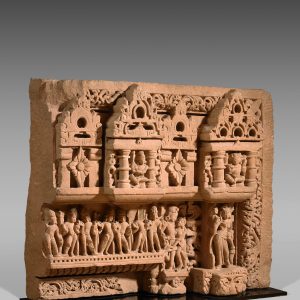Relief of Nandi
18 000,00€
Terracotta
India, Uttar Pradesh
7th century, Gupta period
H. 35 cm
Description
This rare terracotta of Nandi, which has come down to us almost intact, dates from the 6th century.
The traditional mount of the god Śiva, Nandi’s name means “giver of joy”. Both a symbol of virility – embodying the destructive power of the god – and his first devotee, he occupies an important place in śivait iconography.
He is represented in a very realistic posture, with his legs folded under his body. Its head is turned towards the outside of the relief and it looks upwards. Its plasticity is supple and curved, in keeping with the soft aesthetic and the taste for stylisation of the Gupta period. The animal is placed in an architectural frame delimited by two friezes decorated with incised chevrons. On the right, a column topped by a tiger’s head stands.
Its eyes are deeply incised, which gives great expressiveness to its gaze and reinforces the vigour of the representation. His horns are slightly protruding, in accordance with the iconographic codes attributed to Nandi. In the manner of stone sculptors, the coroplasts of the Gupta period play on the softness of the modelling and the stylisation of the forms. The evocative power of the forms and the excellent state of conservation make this relief an exceptional piece.
Provenance : Alsdorf collection then English private collection.

